 What are the potentialities of nanocelluloses exploitation? And how far are we from their entrance into the global market? Innovative enterprises are already on the market with pilot production of various forms of nanocellulose materials. The following worldwide known companies have already started to produce various forms of nanocellulose, including NFC (nanofibrillated cellulose), MFC (microfibrillated cellulose) and CNC (cellulose nanocrystals):
What are the potentialities of nanocelluloses exploitation? And how far are we from their entrance into the global market? Innovative enterprises are already on the market with pilot production of various forms of nanocellulose materials. The following worldwide known companies have already started to produce various forms of nanocellulose, including NFC (nanofibrillated cellulose), MFC (microfibrillated cellulose) and CNC (cellulose nanocrystals):
 Up to date, I have published papers on the topic of nanocellulose and cellulose nanocrystals. My research interested are more in defining innovative applications, from the technological point of view, for nanocelluloses, rather than working on the nanocellulose extraction and production.
Up to date, I have published papers on the topic of nanocellulose and cellulose nanocrystals. My research interested are more in defining innovative applications, from the technological point of view, for nanocelluloses, rather than working on the nanocellulose extraction and production.
Here is a list of open access materials that I have produced so far, also with the collaboration of other excellent Italian researchers!
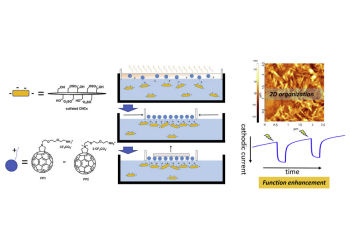 The paper Improving 2D-organization of fullerene Langmuir-Schäfer thin films by interaction with cellulose nanocrystals is the fruit of a collaboration between the Universities of Pisa, Bari, Salento, and Trieste and of the Basque Foundation for Science.
The paper Improving 2D-organization of fullerene Langmuir-Schäfer thin films by interaction with cellulose nanocrystals is the fruit of a collaboration between the Universities of Pisa, Bari, Salento, and Trieste and of the Basque Foundation for Science.
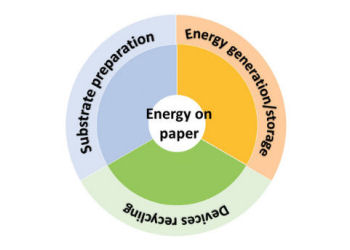 Paper is a fascinating material: it is abundant, harmless, cheap and useful. Humanity has relied on paper for storing information for centuries. The new challenge posed for paper consists of its future use as a substrate for organic electronic devices. This is one of the pivotal developments for paper uses, that will enable cheap and more environmentally friendly electronics. The added value of accessing portable, bendable and lightweight devices represents also a novelty and opportunity.
Paper is a fascinating material: it is abundant, harmless, cheap and useful. Humanity has relied on paper for storing information for centuries. The new challenge posed for paper consists of its future use as a substrate for organic electronic devices. This is one of the pivotal developments for paper uses, that will enable cheap and more environmentally friendly electronics. The added value of accessing portable, bendable and lightweight devices represents also a novelty and opportunity.
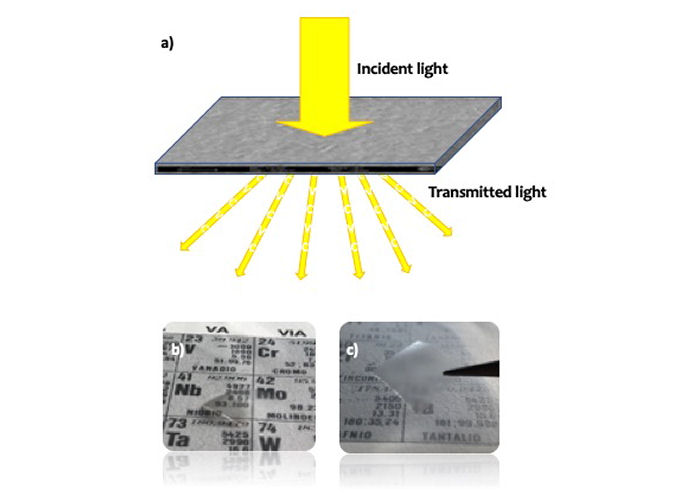 The opaqueness of standard paper originates from the presence of empty spaces among fibers: the presence of air and other fillers yields a material with a discontinuous refractive index. This causes scattering of light in the backward direction and is the reason why we cannot look through a sheet of paper. This limit represents, actually, one of the paper’s most important properties: it is relying on the opaqueness of paper that we are using it for centuries as a substrate for the transmission of knowledge.
The opaqueness of standard paper originates from the presence of empty spaces among fibers: the presence of air and other fillers yields a material with a discontinuous refractive index. This causes scattering of light in the backward direction and is the reason why we cannot look through a sheet of paper. This limit represents, actually, one of the paper’s most important properties: it is relying on the opaqueness of paper that we are using it for centuries as a substrate for the transmission of knowledge.
 It was released today as a Just Accepted Manuscript the article “Tailoring water stability of cellulose nanopaper by surface functionalization”. The publication is a study on cellulose nanopaper topochemical functionalization, attained via dipping the nanopaper in an organic solution of acyl chlorides.
It was released today as a Just Accepted Manuscript the article “Tailoring water stability of cellulose nanopaper by surface functionalization”. The publication is a study on cellulose nanopaper topochemical functionalization, attained via dipping the nanopaper in an organic solution of acyl chlorides.
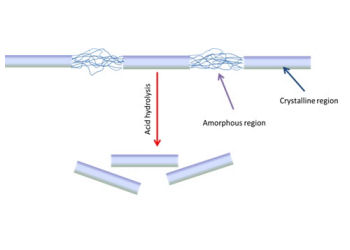 An optically transparent paper is appealing for a series of applications and can be attained by processing cellulose nanocrystals by standard paper-making procedures. The nano-dimensioned cellulose crystals produce a thin film with suppression of light scattering, thanks to the reduced dimension of interstices among nanofibers.
An optically transparent paper is appealing for a series of applications and can be attained by processing cellulose nanocrystals by standard paper-making procedures. The nano-dimensioned cellulose crystals produce a thin film with suppression of light scattering, thanks to the reduced dimension of interstices among nanofibers.
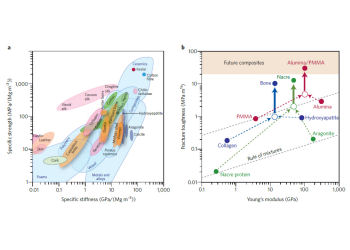 Evaluation of materials properties for a selected application necessarily requires a method to compare different material sources. This is particularly true in the case of natural materials, those biocompatible and renewable constituents that can be extracted from biologic tissues.
Evaluation of materials properties for a selected application necessarily requires a method to compare different material sources. This is particularly true in the case of natural materials, those biocompatible and renewable constituents that can be extracted from biologic tissues.
NANOLEAVES - Research Group at the Department of Chemistry of the University of Pisa
Via Giuseppe Moruzzi, 13 - 56124 Pisa, Italy
Admin LogIn/LogOut | Privacy Policy![]()
